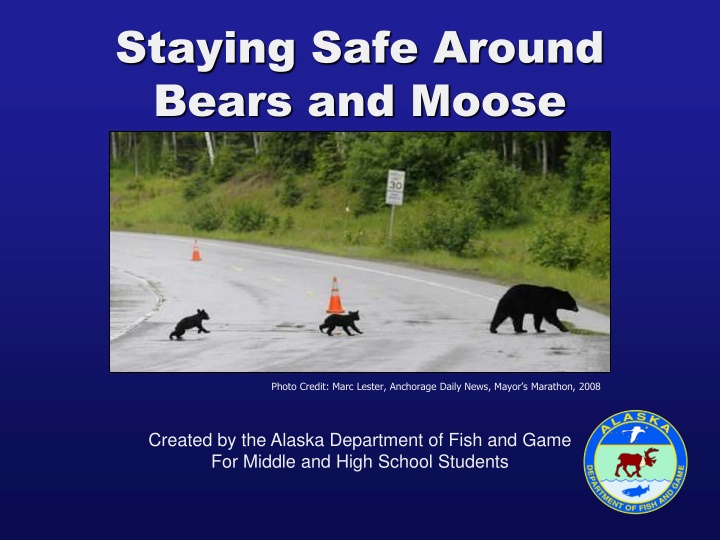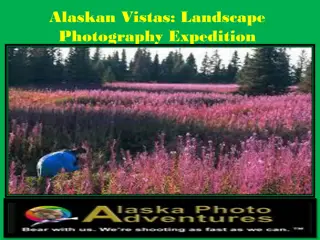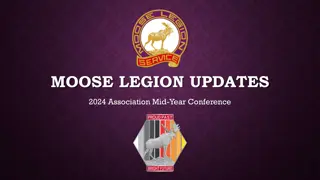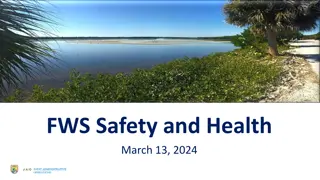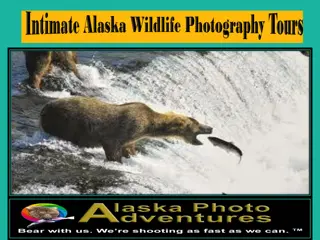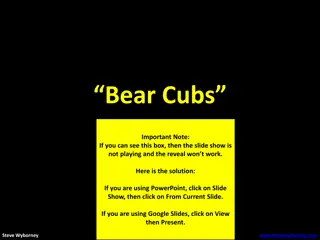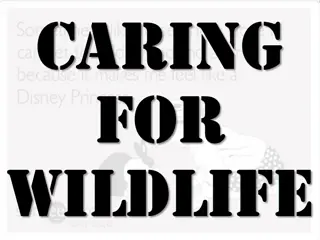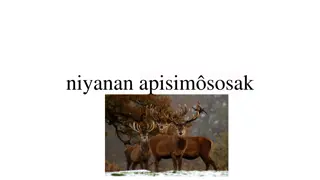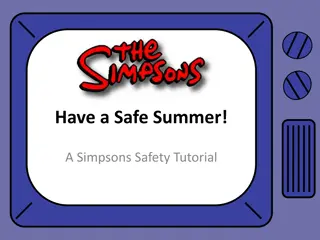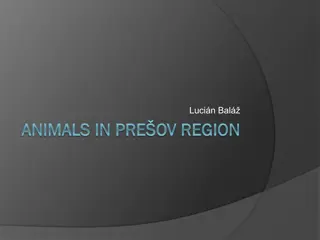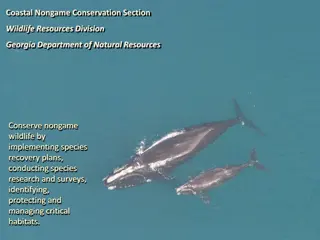Staying Safe Around Bears and Moose - Wildlife Safety Tips
Increase your knowledge of wildlife safety with these tips on staying safe around bears and moose. Learn about different bear species, their behaviors, and how to mitigate risks when exploring the outdoors in Alaska. Discover how to stay safe in parks, on trails, and in your neighborhoods. Be alert for bear signs, know what to do in camping situations, and understand proper food storage to coexist safely with these magnificent creatures.
Uploaded on Mar 18, 2025 | 1 Views
Download Presentation

Please find below an Image/Link to download the presentation.
The content on the website is provided AS IS for your information and personal use only. It may not be sold, licensed, or shared on other websites without obtaining consent from the author.If you encounter any issues during the download, it is possible that the publisher has removed the file from their server.
You are allowed to download the files provided on this website for personal or commercial use, subject to the condition that they are used lawfully. All files are the property of their respective owners.
The content on the website is provided AS IS for your information and personal use only. It may not be sold, licensed, or shared on other websites without obtaining consent from the author.
E N D
Presentation Transcript
Staying Safe Around Bears and Moose Photo Credit: Marc Lester, Anchorage Daily News, Mayor s Marathon, 2008 Created by the Alaska Department of Fish and Game For Middle and High School Students
Goals Increase overall knowledge of wildlife safety (bears and moose) Help people mitigate risks Keep going outside! It s good for your health We live a Big WILD Life in Alaska. Enjoy it!
About Bears: Black vs. Brown? Black Bears: adapted to life in life in forests. If threatened, they typically flee, hide or climb trees. Brown Bears: evolved in treeless habitats. If threatened, they are more apt to defend.
About Bears: Reproduction Mothers raise cubs Black bear cubs stay with mother until they are 1.5 years old on average. Brown bears stay with mothers 2.5 to 3.5 years old on average.
Neighborhood Green Belt Anadromous Stream City Park Neighborhood
Safety Around Our Homes and Neighborhoods
Keep all bear attractants out of reach of bears
Safety in Parks and On Trails Make noise so you don t surprise a bear! Buddy Up. You are safer in a group Use your senses to stay aware. No headphones! Move cautiously, especially along creeks, on blind corners and in heavily vegetated areas Leash your pet or leave it home Never run from a bear!
Camping Pick a safe campsite. Avoid bear trails and areas where fish waste has been left behind. Use a triangle method when possible. Beware of narrow beaches. Allow plenty of room so bears can pass if needed. Sleeping WIND Food storage Cooking/eating
Encountering Bears Your behavior may determine the outcome of the encounter. Stay calm if you see a bear. Try not to move quickly. Don t run!
Encounters: At a distance Enjoy watching bears from a distance Never approach a bear! Use a telephoto lens for photography If the bear does not notice you, quietly leave the way you came.
Encounters: Closer Range Stay calm. Don t panic. Never run from a bear! If the bear does not notice you, move away quietly, keeping eyes on the bear If the bear does notice you, face the bear, talk to it calmly. Group together. If you have a deterrent like bear spray, get ready to use it. If the bear is not approaching, try to increase your distance If a bear approaches, stand your ground. Group together. Make more noise. If you need to, use your deterrent.
Interpretive sign by Alaska Division of State Parks and Outdoor Recreation
Never approach wild animals! Never approach wild animals! Keep a safe distance. Keep a safe distance. THANK YOU! Have fun and be safe! THANK YOU! Have fun and be safe!
